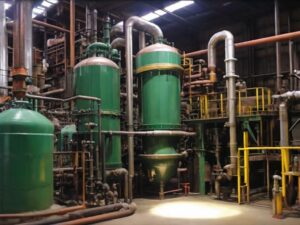Welcome to the Intrinsically Safe Store, your one-stop-shop for all your safety equipment needs. We understand the importance of safety in hazardous environments, and that’s why we’re here to discuss the role of engineering controls in minimizing the need for intrinsically safe and explosion-proof devices. Visit our website to explore our wide range of safety products.
Understanding Intrinsically Safe and Explosion-Proof Devices
Intrinsically safe and explosion-proof devices are designed to prevent ignition of flammable substances in hazardous areas. These devices limit the energy, electrical and thermal, available for ignition. However, the use of these devices alone is not enough to ensure safety in hazardous environments.
The Role of Engineering Controls
Engineering controls play a crucial role in minimizing the need for intrinsically safe and explosion-proof devices. They are strategies designed to protect workers from hazardous conditions by reducing the exposure to hazards before they reach the workers. These controls are implemented at the source of the hazard, along the path between the source and the worker, or at the worker themselves.
Examples of Engineering Controls
- Ventilation systems: These systems reduce the concentration of flammable substances in the air, thereby reducing the risk of ignition.
- Isolation: This involves separating the hazardous substance from the workers, either by enclosing the process or by using remote control technology.
- Substitution: This involves replacing a hazardous substance with a less hazardous one.
Benefits of Engineering Controls
Engineering controls offer several benefits over relying solely on intrinsically safe and explosion-proof devices. They not only reduce the risk of ignition but also improve the overall safety and health conditions of the workplace. Here are some of the benefits:
- Cost-effective: Engineering controls can be more cost-effective in the long run as they reduce the need for expensive intrinsically safe and explosion-proof devices.
- Improved worker safety: By reducing exposure to hazards, engineering controls improve the overall safety of workers.
- Compliance with regulations: Implementing engineering controls can help businesses comply with safety regulations and avoid penalties.
Case Study: The Impact of Engineering Controls
A study conducted by the National Institute for Occupational Safety and Health (NIOSH) found that implementing engineering controls reduced the risk of ignition in a chemical plant by 60%. The plant had previously relied solely on intrinsically safe and explosion-proof devices. After implementing engineering controls, such as improved ventilation and isolation of hazardous substances, the need for these devices was significantly reduced.

While intrinsically safe and explosion-proof devices are essential in hazardous environments, they should not be the only line of defense. Engineering controls can significantly reduce the need for these devices by addressing hazards at their source. By implementing these controls, businesses can improve worker safety, comply with regulations, and save on costs. Visit the Intrinsically Safe Store to explore our range of safety products and learn more about how we can help you create a safer workplace.
If you have any questions or need further assistance, don’t hesitate to contact us. Our team of experts is always ready to help you find the best safety solutions for your business.


























